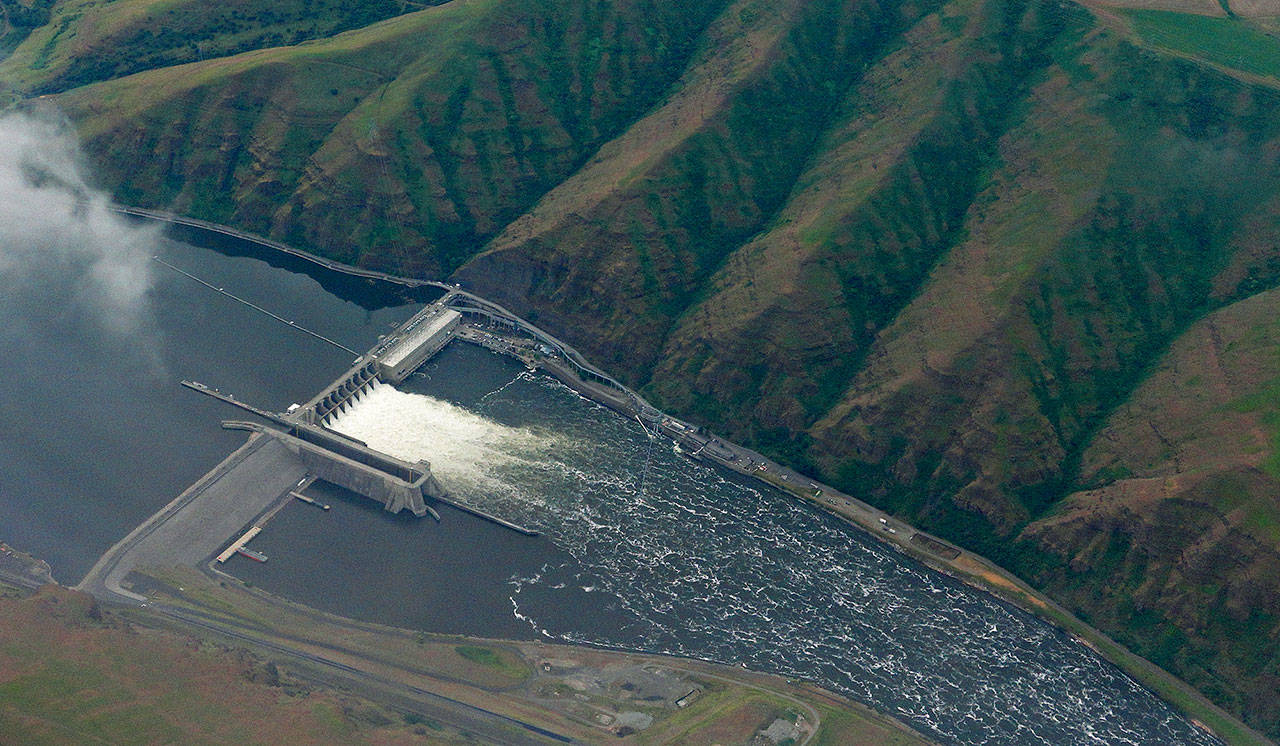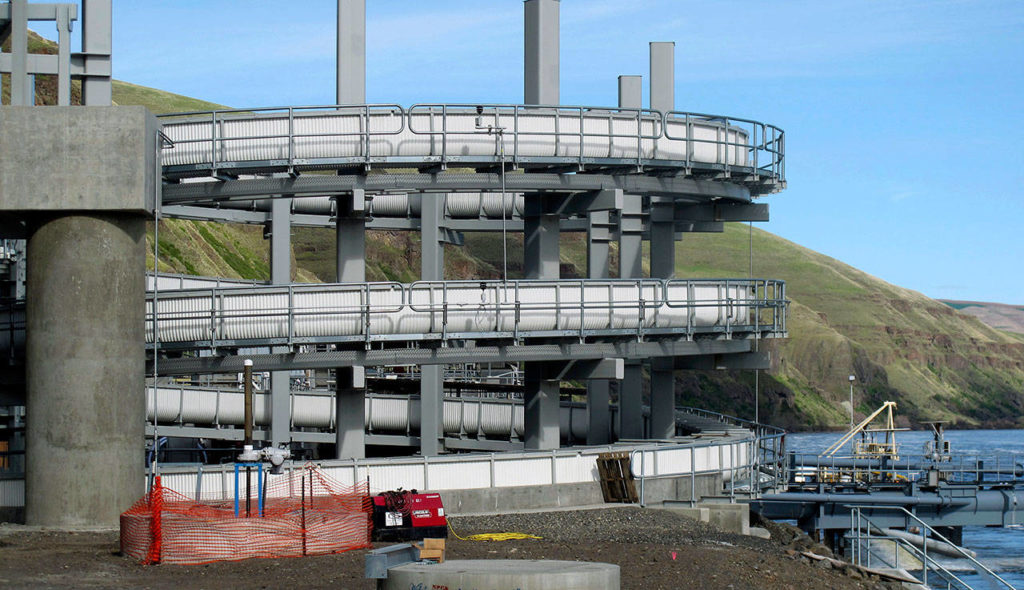EVERETT — Four dams on the lower Snake River help to keep the lights on throughout the Pacific Northwest, as key suppliers of electricity for the Seattle metro area and Snohomish County.
The dams also pose 100-foot-tall obstacles for a dwindling population of salmon, and the orcas who depend on them.
This week environmentalists, farmers, tribal leaders and public utility officials are anxiously awaiting a federal report about whether the salmon and dams can coexist, or not, on the Snake. The report is expected to be released Friday by the U.S. Army Corps of Engineers, the U.S. Bureau of Reclamation and the Bonneville Power Administration.
Options range from doing nothing to the dams between Pasco and Lewiston, Idaho, or completely breaching them.
The ultimate decision could affect the price of power statewide and in Snohomish County, where the Public Utility District relies on the dams for carbon-free energy. It could also impact salmon recovery, irrigation, river navigation, flood protection and recreation.
The dams — Ice Harbor, Lower Monumental, Little Goose and Lower Granite — are capable of providing about 15% of the power for Snohomish County PUD customers. For now, it’s too early to tell what the exact impact on electricity rates could be, district spokesman Aaron Swaney said.
In 2016, an Oregon judge ordered the Bonneville Power Administration, the nonprofit federal agency that owns the dams, to study the effects the structures have on salmon. The Army Corps of Engineers and the Bureau of Reclamation worked with the BPA to create the new report.
The 1,000-mile-long Snake River, the 13th-longest in the United States, flows from western Wyoming to where it meets with the Columbia River near Pasco. It once produced salmon runs in the millions. Those spawning grounds were disrupted when the dams were built, and environmental groups say they must be breached to restore the salmon.
The BPA has pumped $17 billion into fish restoration projects over the past 30 years, according to the PUD. Despite those efforts, thirteen runs of Columbia and Snake river salmon and steelhead remain endangered or threatened.
The dams produce about 5% of the region’s electricity, roughly enough to power Seattle. A 2016 BPA report said a new natural gas plant would be required to replace the lost electricity if the Snake River dams were removed.
The dams provide irrigation water to about 47,000 acres of farmland, and that would cease if the dams are breached. The structures also allow barges between Lewiston and Pasco to access ports along the Pacific coastline.
The report could stop short of calling for the demolition of the dams and instead suggest more water be spilled outside of the turbines. This would reduce their ability to provide power but make passage easier for salmon.
Some environmental groups have said that breaching the dams is the best option for salmon recovery, or perhaps the only way to save them and a shrinking orca population.
Removing the dams would greatly reduce the amount of clean energy the Snohomish PUD is able to buy from BPA.
That could force the utility to pay more for power, in turn raising prices to run your washing machine, hair dryer or seasonal affective disorder lamp.
Ahead of Friday’s announcement, leaders from historically opposing groups — fish proponents and public utility officials — signed a letter saying they will work together in advocating for a mutually beneficial plan for the dams. It’s a significant step, in light of past tensions.
Regardless “of their perspective, people on all sides of this issue want the same outcomes — restored salmon populations; farms that are able to grow and get their crops to market; protection of the interests of tribes and communities; and clean, reliable, and affordable electricity,” said Nancy Hirsh, executive director of the Northwest Energy Coalition, in a prepared statement.
The letter expressed a hope that Friday’s report will serve as a “springboard” for the dams’ future, rather than a hard-line plan.
After the study is released, a public comment period is set to open, with a final recommendation expected in July. The Snohomish PUD is pushing to have one of those meetings in Everett.
Employees at the Snohomish PUD plan on spending all weekend poring over potentially thousands of pages of the draft study, deciphering what it could mean for power customers.
John Haarlow, CEO of the PUD, said his agency is focused on a long-term outcome that ensures both fish recovery and clean, affordable and reliable power.
“These are complex issues that go back generations,” he said, “and I believe the only path to enduring solutions is through this collaboration.”
Julia-Grace Sanders: 425-339-3439; jgsanders@heraldnet.com.
Talk to us
> Give us your news tips.
> Send us a letter to the editor.
> More Herald contact information.


























